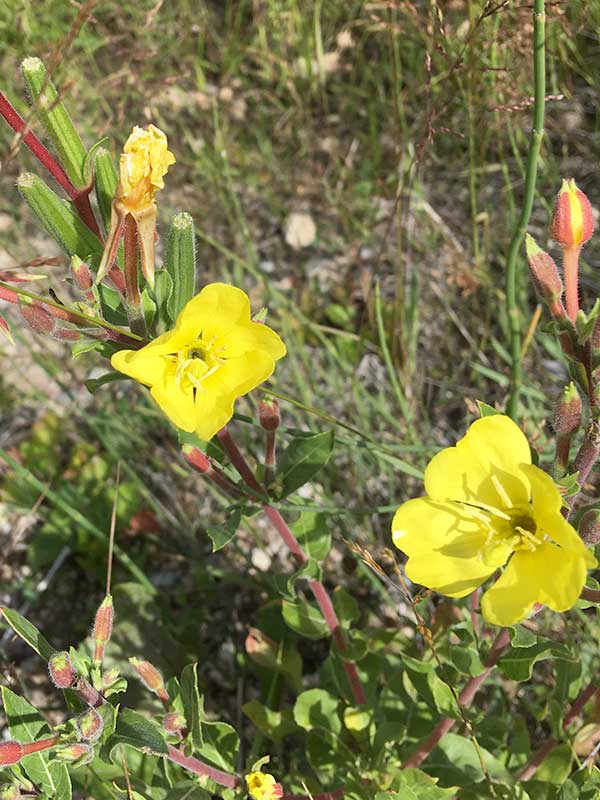Oenothera villosa / hairy evening primrose
- yellow flowers on tall stalks, several flowers in a cluster
- 4 petals; 8 stamens; large, 4 part stigma
- hairy – often reddish – stems; hairy leaves
- lance-shaped leaves, larger on stem than basal
- disturbed areas and stream banks
Synonym: Oenothera strigosa
The hairy evening primrose is an erect, simple or branched stem biennial or short-lived perennial. The leaves and stems are hairy. Hence the name. It grows from a stout taproot, up to 5 feet tall. The stems may be grayish (with flat stiff hairs or a mixture of longer ones) or red.
The inflorescence is a few-flowered, open spike, i.e. the flowers are in small clusters at the top of the stem and in upper leaf axils. Each has four yellow to pale orange petals about an inch long. Mostly – repeat, mostly – they are open in the evening, but the photos in the gallery were taken before noon. As the individual flowers age, they do not turn red. The flower buds are erect with red bracts. The petals are rounded and a bit notched at the tips. Each has 8 stamens and a large, four-parted style.
Hairy evening primrose leaves are in basal rosettes for the 1st year, and alternate on the stems in the 2nd year. The lower stem leaves have petioles but the upper ones have short ones at best. The leaves are lance shaped and up to 6 inches long, although the basal leaves are shorter. The midveins are distinctly reddish or whitish, most visibly on the lower surface. The margins may be either entire or wavy-toothed.
This species is found chiefly in meadows and along stream banks and in disturbed areas. The blooming period is June (spring) to August (late summer).
Interesting bits – Hairy evening primrose roots and leaves are edible and “somewhat peppery”. However, please find a more authoritative source before putting these in your mouth. The flowers are reported to have a sweet taste and can be used in salads or as a garnish. I might actually do that.
| Color | |
|---|---|
| Family | |
| Blossom size | |
| Inflorescence size | |
| Inflorescence type | |
| When? | |
| Where? |


